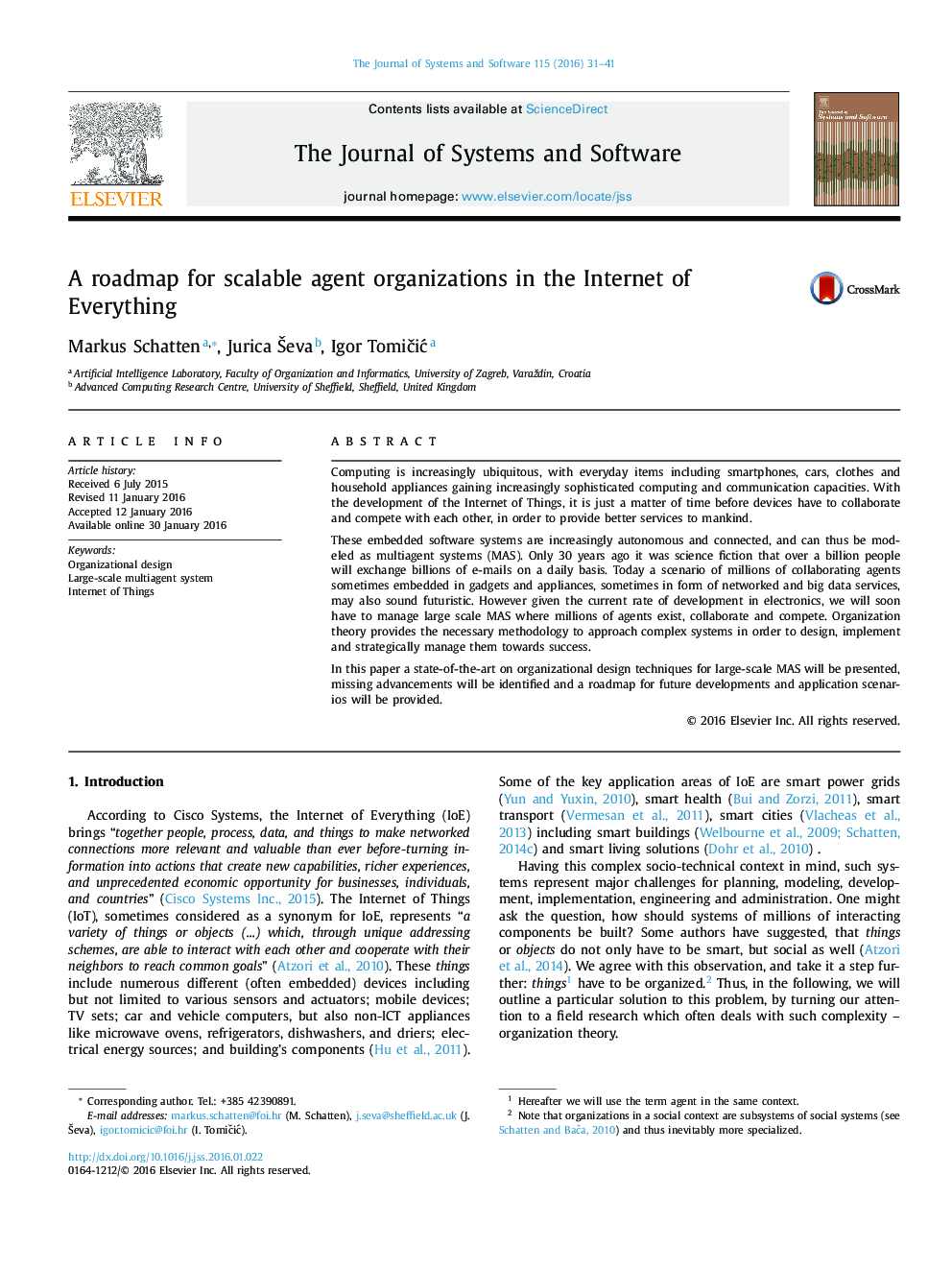| Article ID | Journal | Published Year | Pages | File Type |
|---|---|---|---|---|
| 461542 | Journal of Systems and Software | 2016 | 11 Pages |
•Establishes a new direction in software engineering for the Internet of Things.•Argues that we will soon have to manage systems where millions of agents interact.•Proposes organization theory as the necessary foundation ontology.•Provides examples of possible application areas•Gives a roadmap for future developments.
Computing is increasingly ubiquitous, with everyday items including smartphones, cars, clothes and household appliances gaining increasingly sophisticated computing and communication capacities. With the development of the Internet of Things, it is just a matter of time before devices have to collaborate and compete with each other, in order to provide better services to mankind.These embedded software systems are increasingly autonomous and connected, and can thus be modeled as multiagent systems (MAS). Only 30 years ago it was science fiction that over a billion people will exchange billions of e-mails on a daily basis. Today a scenario of millions of collaborating agents sometimes embedded in gadgets and appliances, sometimes in form of networked and big data services, may also sound futuristic. However given the current rate of development in electronics, we will soon have to manage large scale MAS where millions of agents exist, collaborate and compete. Organization theory provides the necessary methodology to approach complex systems in order to design, implement and strategically manage them towards success.In this paper a state-of-the-art on organizational design techniques for large-scale MAS will be presented, missing advancements will be identified and a roadmap for future developments and application scenarios will be provided.
Graphical abstractFigure optionsDownload full-size imageDownload as PowerPoint slide
